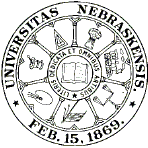
University Studies (University of Nebraska) (1888–1984)
Date of this Version
1931
Citation
UNIVERSITY STUDIES VOLS. XXX-XXXI 1930-1931
Abstract
The appearance of the monarchical bishop in the early organization of the church is its most outstanding feature. His diocese so far supplants in importance the early Christian community, that in his own person he becomes almost synonymous with the church itself. In the respect paid him and in the affluence of his outward display he vies with the Roman provincial governor. The increasing patrimony of the church comes under his guiding hand, and with time he becomes the dominant administrator in those towns where Roman municipal administration was decadent. Every bishop to some extent nourished ambitions similar to those of the bishop of Rome. Yet we may not speak of the monarchical bishop as an independent person, even though his position within the state may be regarded as privileged and political. While there was still an emperor there was still an imperial will: the church functioned within and as a dependent part of the state. There are, however, some features of the development of the episcopate that become fixed and more pronounced as the new Germanic kingdoms are superimposed upon the church. Violent struggles to obtain bishoprics are but one of the signs of their increasing importance, while the exercise in almost all the new Germanic kingdoms of a firm royal control over the election of bishops is another. In early Germanic Gaul the bishops as a group are the most influential class. Coming as they do in large part from the Gallo-Roman nobility, they acquire increased influence as centers of resistance to the invading German culture, while to the Germans themselves they are the bearers of a respected and useful tradition. Sidonius Apollinaris of Clermont and Gregory of Tours may in this regard be taken as typical of their times.


Comments
PUBLISHED BY THE UNIVERSITY 1932